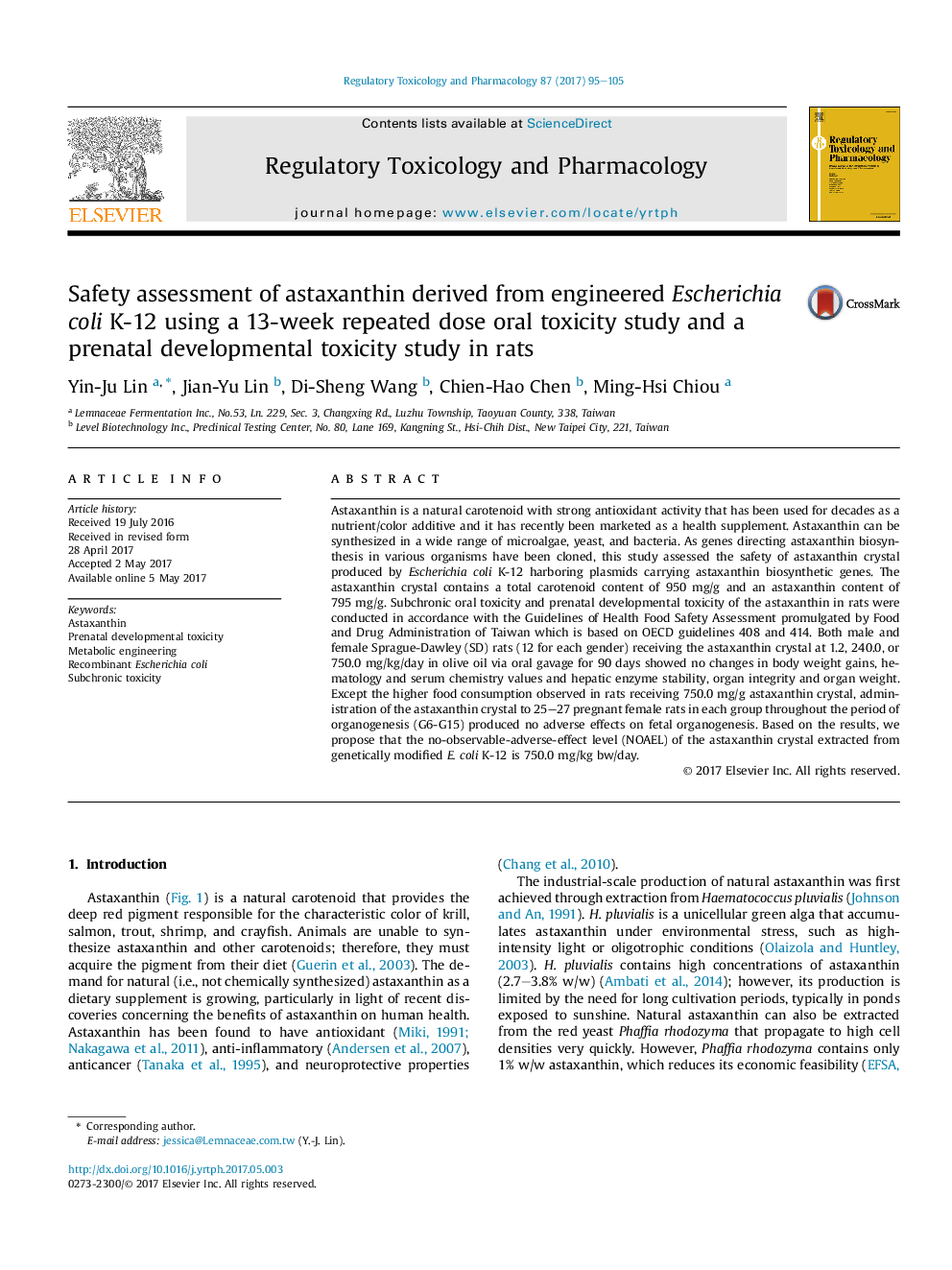| Article ID | Journal | Published Year | Pages | File Type |
|---|---|---|---|---|
| 5561327 | Regulatory Toxicology and Pharmacology | 2017 | 11 Pages |
â¢This is the first toxicity report of astaxanthin produced by engineered E. coli.â¢No adverse effects were noted in the rats in subchronic toxicity study (OECD 408).â¢No toxicity was observed in prenatal developmental toxicity study (OECD 414).â¢The NOAEL of the astaxanthin crystal is 750 mg astaxanthin crystal/kg bw/d.
Astaxanthin is a natural carotenoid with strong antioxidant activity that has been used for decades as a nutrient/color additive and it has recently been marketed as a health supplement. Astaxanthin can be synthesized in a wide range of microalgae, yeast, and bacteria. As genes directing astaxanthin biosynthesis in various organisms have been cloned, this study assessed the safety of astaxanthin crystal produced by Escherichia coli K-12 harboring plasmids carrying astaxanthin biosynthetic genes. The astaxanthin crystal contains a total carotenoid content of 950 mg/g and an astaxanthin content of 795 mg/g. Subchronic oral toxicity and prenatal developmental toxicity of the astaxanthin in rats were conducted in accordance with the Guidelines of Health Food Safety Assessment promulgated by Food and Drug Administration of Taiwan which is based on OECD guidelines 408 and 414. Both male and female Sprague-Dawley (SD) rats (12 for each gender) receiving the astaxanthin crystal at 1.2, 240.0, or 750.0 mg/kg/day in olive oil via oral gavage for 90 days showed no changes in body weight gains, hematology and serum chemistry values and hepatic enzyme stability, organ integrity and organ weight. Except the higher food consumption observed in rats receiving 750.0 mg/g astaxanthin crystal, administration of the astaxanthin crystal to 25-27 pregnant female rats in each group throughout the period of organogenesis (G6-G15) produced no adverse effects on fetal organogenesis. Based on the results, we propose that the no-observable-adverse-effect level (NOAEL) of the astaxanthin crystal extracted from genetically modified E. coli K-12 is 750.0 mg/kg bw/day.
Graphical abstractDownload high-res image (129KB)Download full-size image
